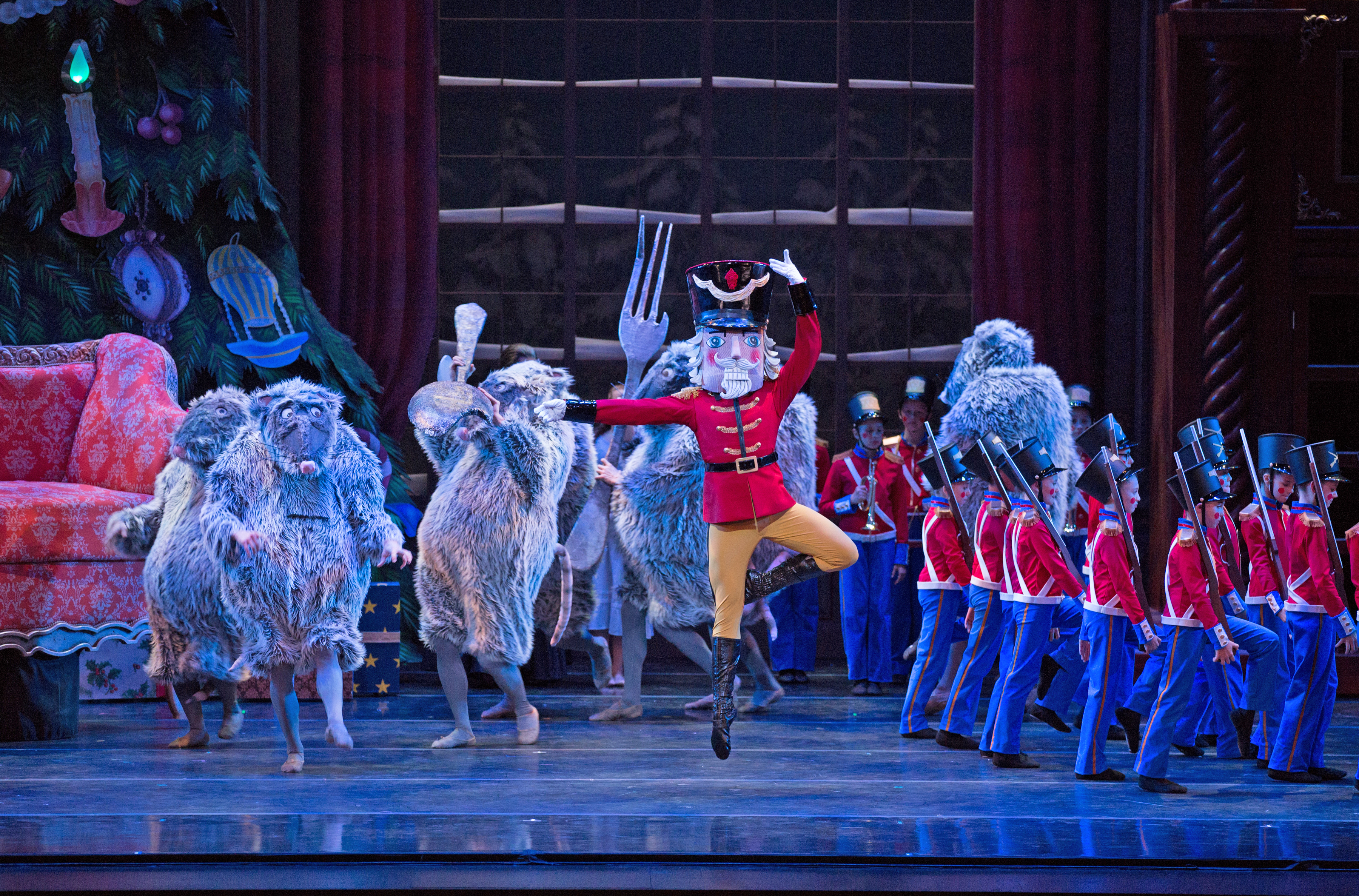IN REVIEW: KC Ballet dancers demonstrate mastery of classical idiom, with roots showing
The dancers of the Kansas City Ballet are known for their proficiency in a wide variety of styles, and we sometimes forget that classical ballet remains at the core of their training and artistry. The company’s mastery of this centuries-old art form—which stands at the center of Western dance—was on glorious display at its production of Giselle that opened March 10th. This tragic tale, dating from 1841 and containing a surprising amount of the original 19th-century choreography, is a sort of litmus test for any ballet company: Our local troupe rose admirably to the occasion, performing Giselle with a loving care that can only grow from true conviction. Despite technical glitches here and there, in both expression and control this production notably exceeded the company’s last presentation of the work during the 2002-2003 season.
At the center of the production was a magnificent performance by Kimberly Cowen in the title role, as the innocent young girl who is driven mad by love and deceit. Her first appearance onstage was like a splash of electric energy, and she moved through Act 1 with girlish panache, smoldering inner passion, peerless technical aplomb and a tristesse that was truly moving. Her celebrated mad scene contained the full range of frenetic emotions, from petulance to scary hilarity and abject despair. (The almost comically abrupt suddenness of her death, a peculiar 19th-century conceit perhaps, drew titters from the audience.) In Act 2 she fully embraced the leaden quality of “dancing dead,” with legs and arms heavy from the weight of the afterworld. It was clearly one of the crowning achievements of Kimberly’s two decades with the company, and as she took her bows one had the strong, inevitably sad feeling she was saying farewell to this plum role. (Kimberly is double-cast with Tempe Ostergren.)
Geoffrey Kropp was a tall, youthful Albrecht, a stately partner for Kim who gradually worked his way into her world to provide a genuine, and quite grown-up, chemistry between the two. Their partnering in Act 2’s misty netherworld contained a spark of genuine emotion. Michael Eaton played Hilarion as dark and a bit sinister, bringing out a sanguine, villainous quality that made us feel okay about him dying. Logan Pachciarz showed poise as Wilfrid, as did the fine-looking dogs brought onstage for Act 1. In Act 2, Angelina Sansone floated miraculously across the stage in her initial entrance as Myrtha, whom she proceeded to play convincingly as a cold, vengeful Queen of the Wilis. The company of Wilis was especially impressive, their stationary arabesques conveying with chilling force the stasis of death.
The staging by Karen Brown had an intuitively historical quality to it, with quirky leaps and ensembles that are unique to this piece. Oliver Smith’s cheerful, woodsy set design of Act 1 featured a fairy-tale castled painted high on the drop, and Giselle’s rustic house stage right. Lighting designer Kirk Bookman created a cool, bluish death-world for Act 2, with hazy hues and watery dapples on the floor. The Kansas City Symphony under Ramona Pansegrau’s direction played serviceably though with little inner tension. All told, however, this Giselle is highly recommended to any lover of ballet young or old.
The Kansas City Ballet’s Giselle runs through March 13th at the Lyric Theatre. For tickets and more information call 816-931-2232 or go to www.kcballet.org.
To reach Paul Horsley, performing arts editor of The Independent, send email to phorsley@sbcglobal.net.
Features

By Paul Horsley David Ludwig knows better than to attach a “back-story” to a piece irrevocably, although he has openly stated that his new Violin Concerto was inspired by his…

By Paul Horsley Each production of The Nutcracker is to some extent a balancing act between spectacle and dance. At best it seamlessly integrates the colors and stagecraft that keep…

By Paul Horsley The Lyric Opera of Kansas City deserves applause for taking on an opera in Czech for the first time in its history, but the opening performance of…






